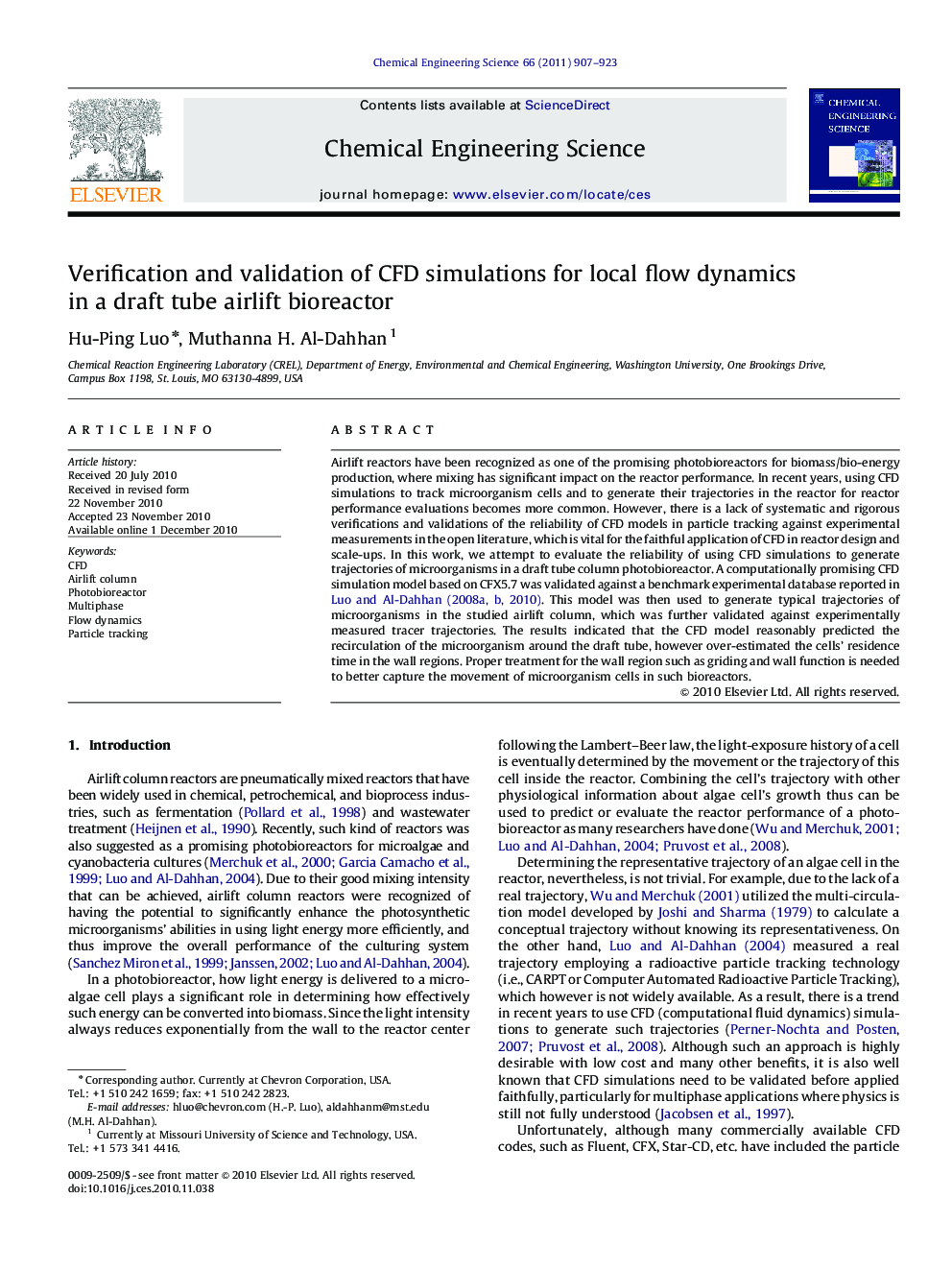| Article ID | Journal | Published Year | Pages | File Type |
|---|---|---|---|---|
| 156447 | Chemical Engineering Science | 2011 | 17 Pages |
Airlift reactors have been recognized as one of the promising photobioreactors for biomass/bio-energy production, where mixing has significant impact on the reactor performance. In recent years, using CFD simulations to track microorganism cells and to generate their trajectories in the reactor for reactor performance evaluations becomes more common. However, there is a lack of systematic and rigorous verifications and validations of the reliability of CFD models in particle tracking against experimental measurements in the open literature, which is vital for the faithful application of CFD in reactor design and scale-ups. In this work, we attempt to evaluate the reliability of using CFD simulations to generate trajectories of microorganisms in a draft tube column photobioreactor. A computationally promising CFD simulation model based on CFX5.7 was validated against a benchmark experimental database reported in Luo and Al-Dahhan, 2008a, Luo and Al-Dahhan, 2008b and Luo and Al-Dahhan, 2010. This model was then used to generate typical trajectories of microorganisms in the studied airlift column, which was further validated against experimentally measured tracer trajectories. The results indicated that the CFD model reasonably predicted the recirculation of the microorganism around the draft tube, however over-estimated the cells' residence time in the wall regions. Proper treatment for the wall region such as griding and wall function is needed to better capture the movement of microorganism cells in such bioreactors.
